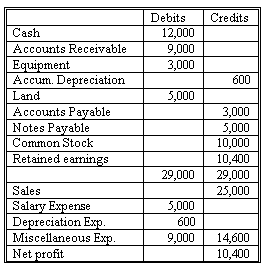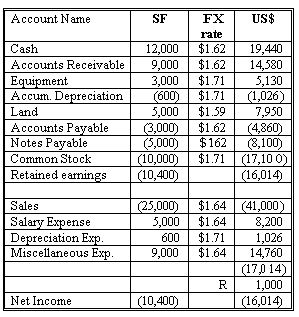- CFA Exams
- 2026 Level II
- Topic 3. Financial Statement Analysis
- Learning Module 12. Multinational Operations
- Subject 3. Remeasurement: The Temporal Method
Seeing is believing!
Before you order, simply sign up for a free user account and in seconds you'll be experiencing the best in CFA exam preparation.
Subject 3. Remeasurement: The Temporal Method PDF Download
Remeasurement refers to the process of converting local currency transactions into the functional currency either by a firm with transactions in a foreign currency or with a foreign subsidiary. The temporal method is used for foreign entities that are significantly integrated with the U.S. parent. It is used when the functional currency of the foreign subsidiary is the presentation (parent) currency. Substantially all of their operations are conducted in the parent's presentation currency.




The translation adjustment resulting from remeasurement is based on the net monetary assets or liabilities rather than the net assets of the foreign operation. The reported translation adjustment, therefore, ignores the impact of changing exchange rates on inventories and fixed assets even though they may be effective hedges for major components of the net monetary position, that is, accounts payable and long-term liabilities.
Remeasured income statements also include the translation gain or loss on net monetary assets and liabilities, thereby adding significant volatility to reported income.
Example
Assume that a company starts a subsidiary operation in Switzerland on January, 2001 by investing 10,000 Swiss Francs (SF). The subsidiary immediately acquires fixed assets and commences operations. On April 1, additional land is acquired for 5,000 SF. At the end of the accounting period the subsidiary reports the following trial balance:

The relevant exchange rates during the year are as follows:

The parent company uses the $US as its presentation currency. The subsidiary's trial balance must, therefore, be translated into $US for financial reporting purposes. Translation of the trial balance under temporal method is as follows:

- Monetary assets and liabilities (cash, receivables, accounts payable and notes payable) are remeasured at the current exchange rate (1.62).
- Non-monetary assets and capital accounts are remeasured at historical exchange rates (1.71 for fixed assets and 1.59 for land).
- Income statement accounts are remeasured at the average exchange rate under the assumption that they occur evenly throughout the period (1.64).
- Expense accounts related to assets remeasured at historical exchange rates, however, are themselves translated at historical exchange rates. Examples are cost of goods sold and depreciation (1.71).
- The net remeasurement (R) debit or credit needed to balance the trial balance is reported as a component of current income.
User Contributed Comments 5
| User | Comment |
|---|---|
| TreasureH | 1. Figure out the change of the Net Book Value; 2. Fugure out the current N/I; 3. Difference of the two is the required (R). |
| REITboy | Anyone have a logical way to remember what rates apply to the various I/S & B/S line items? |
| czar | REITboy, current assets and liabilty that can be converted for cash takes current rates. Inventory is exclude coz inventory is going to be used for business and not converted into cash. Hope this helps |
| davidt876 | nice czar. and for the I/S: 1. depreciation has to be the same as we calculated on the B/S, and on the B/S we had to apply the same rate to depreciation as we did to fixed assets (historical) 2. for all the other revenues and expenses we assume they happened throughout the year. so we don't select an exchange rate reported at a single point in time. we select the average |
| davidt876 | also i found the layout of the income statement above to be a little confusing, especially when they say R = 1,000. it makes it seem like there was a conversion gain, when in fact it's a loss of 1,000. and net income is positive not negative. i know what they're doing isn't 'wrong' but it's just gonna unnecessarily confuse people. if you don't know how they got Retained Earnings - you first convert everything on the trial balance in the same Debit/Credit format they showed in the question. then you 'plugg' a number into retained earnings that will balance the trial balance. then calculate net income by converting all of its inputs. now the value that you need to add or subtract from net income to make it equal to retained earnings is the conversion g/l |

I was very pleased with your notes and question bank. I especially like the mock exams because it helped to pull everything together.

Martin Rockenfeldt
My Own Flashcard
No flashcard found. Add a private flashcard for the subject.
Add